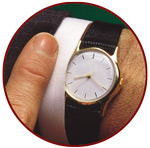Stroke
A stroke is also known as a “brain attack” and happens when the blood flow to the brain is blocked or when a blood vessel in or around the brain bursts, and brain cells start to die.
A stroke can kill brain cells that are responsible for moving, thinking, speaking or even breathing. Stroke is very serious. It is the fourth leading cause of death in North Carolina.
There are two types of strokes:
- Ischemic Stroke is the most common type of stroke. Blood vessels to the brain are blocked, and brain cells don't get the blood and oxygen they need. This results in permanent brain injury.
- Hemorrhagic Stroke occurs when a blood vessel in the brain bursts or breaks, and brain cells are not getting the oxygen and nutrients they need.
TIAs (Transient Ischemic Attacks)
The TIA is a warning sign that an ischemic stroke could occur. Blood flow to the brain is blocked or reduced only for a very short amount of time. The symptoms of a TIA are similar to a stroke, but they generally last only for a couple of minutes or at most a few hours.
Know the Signs of a Stroke
BE FAST is a handy acronym for recognizing common signs of a stroke:
- BALANCE – is there a sudden loss of balance or coordination?
- EYES – is there sudden blurred or double vision or sudden, persistent vision trouble?
- FACE – when smiling, is one side of the face drooping?
- ARMS – raise both arms. Does one drift downward? Is there weakness or numbness on one side?
- SPEECH – is speech slurred or garbled? Can you repeat a simple phrase?
- TIME – to call 911 if you notice one or more of these signs.

When it comes to stroke, act fast! Call 911, if you suspect someone is having a stroke.

Call 911!
If you or someone you know is having a stroke, immediately call 911 so an ambulance can be sent. EMS personnel can start treatment on the way to the hospital and communicate with doctors who can improve chances of recovery if you get to the hospital immediately.

Check the Time
Check the time to determine when the first symptoms appeared. It is very important to take immediate action. If given within three hours of the start of symptoms, a clot-busting drug can reduce long-term disability for the most common type of stroke.

